Starting a new enterprise is always a balanced risk. If you’re successful, you might not just make a profit for yourself but your entire community may benefit too when there’s a new source of employment in the region. If you’re unsuccessful, you stand to lose your investment and the affects could be traumatic.
As journalists and storytellers, we love featuring those who have broken the mould to do something different, whether with their farm, career or their life. Farm diversification stories are especially fascinating – it is scary to break away from what you know to take a chance on a new venture.
These niche farming areas – whether taking on an aquaculture project or starting to grow hemp – make great stories, but it’s important to remember that, for most of these farmers, support and guidance are in short supply. As our agricultural systems diversify and our climate changes, more farmers are finding themselves in a pioneering position – for better or for worse.
This is what has been found as Irish farmers try to make their way through heliciculture or snail farming.
Heliciculture in Ireland
Heliciculture has not been traditionally practised in Ireland. It is only in the past decade that it was introduced. Therefore, there is very little research on snail farming in the context of an Irish climate. We generally turn to those who have been successful with heliciculture to learn about how snail farming works – or could work – in Ireland.
Most successful commercial snail farmers have been farming for five or more years. Most say that the first few years were extremely challenging as they figured out what worked and what didn’t. As there has been no research conducted by Teagasc and only a small amount of market research from Bord Bia, snail farmers have had to find their own route to market, including the processing and export of their snails, as very few are eaten locally and there are no Irish processing facilities.
Why would you farm snails?
“Along with the growing list of health benefits of eating snails, the future of the snail market looks strong. The challenge in Ireland is to create the right farming conditions for sustainable and profitable yields.” – Bord Bia, 2018
While we do not traditionally consume snails here in Ireland, they are enjoyed in many other parts of the world – most notably France – but also in places like Southeast Asia, Northern Africa, Spain and Italy.
Bord Bia’s Global Snail Market Overview (2022) was commissioned by Bord Bia’s Thinking House. They used IndexBox Analysis and Global Trade Atlas (GTA) as the primary sources of data. The report tells us that in 2020, France alone accounted for 31% of total consumption value globally, followed by Spain, Morocco, Portugal, China and Italy.
France may eat the most snails, but the majority of these are imported from other countries. Morocco is by far the largest global producer of snails, followed by Spain, Hungary and Turkey (according to Bord Bia’s report, Ireland comes in at number 23 on that list; having produced 557 tonnes in 2020).
Ireland’s climate is purported to be well-suited to snail farming. Overall demand for snail is high – and not just for food. Skincare, pharmaceutical and other products are made with snail mucous or powdered snail shells.
There is also growing demand for value-added snail products, including pre-prepared snails and snail caviar, which is considered a delicacy and sells for high prices (according to a 2019 article in Modern Farmer, it can catch a price of up to $3,000USD/kg). Nutritionally, snails are low in fat, packed with protein and rich in minerals.
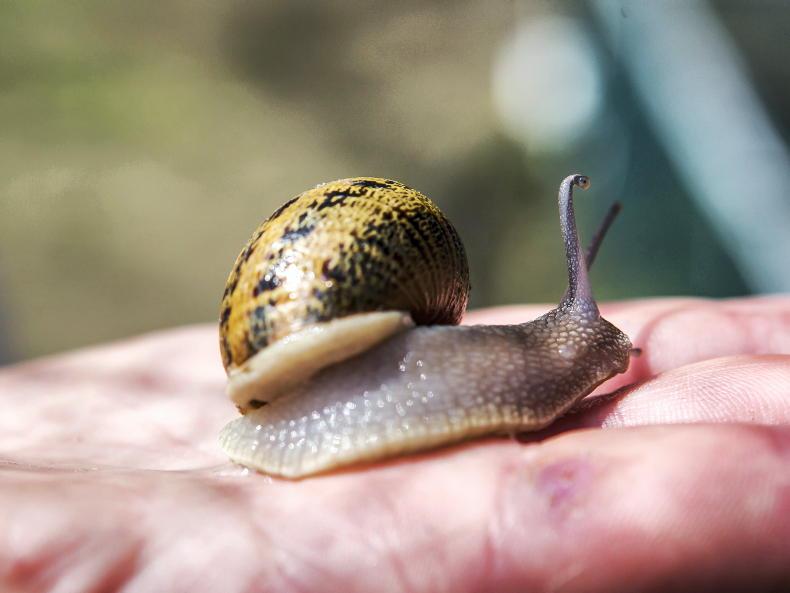
/ Philip Doyle
In the Bord Bia report, a SWOT analysis of snail farming in Ireland was conducted (strengths, weaknesses, opportunities and threats). It lists several strengths, including our “strong Irish image in key European markets for quality and farming” and the “quality of Irish farmed snails”, while the weaknesses include high input costs and the fact that snail farming is very labour intensive.
The current reality
Most agree that there is an opportunity for Ireland to grow its snail farming industry to meet this global demand. However, there are roadblocks which stand in the way of new or would-be snail farmers.
In researching this article, Irish Country Living spoke with snail farmers on both sides of the spectrum; from two of the most successful, to several who have struggled to make any yield or profit. There are few truly successful farms in Ireland, and some say the portrayal of snail farming in Ireland from the media and Government bodies (like Teagasc and Bord Bia) often make it sound more lucrative than they have experienced.
Production
Different methods can be used for snail farming around the world. Some farm snails entirely outdoors, from the first stage of breeding to the final (fourth) stage of harvesting (the full life cycle of a snail, from hatching to harvesting, takes around 10 months).
The method which is generally considered best for Irish conditions is the hybrid indoor-outdoor method, where the breeding stage takes place indoors while maturation and harvesting are done outdoors. However, some argue that the outdoor method is perfectly fine for our climate and requires fewer inputs and less labour (though this method might also result in lower yields).
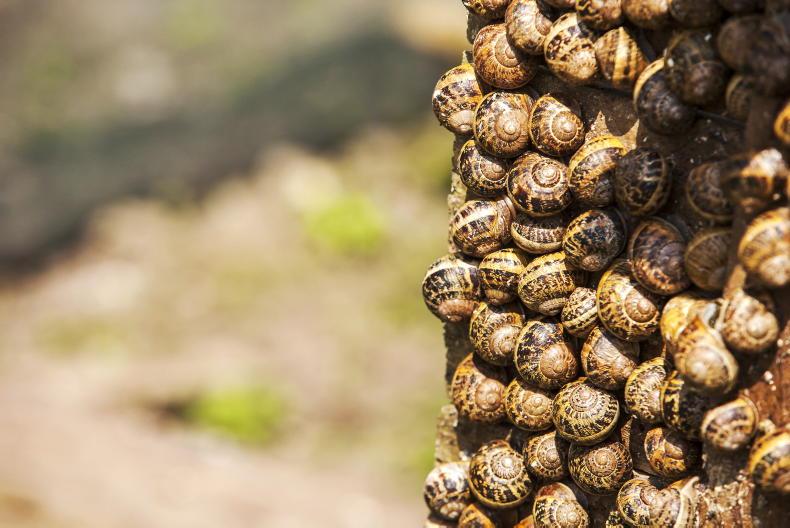
The preferred farming method of many snail farmers in Ireland is the hybrid indoor-outdoor style, where the snails are bred indoors and reared outdoors. / Philip Doyle
When done correctly, the mixed indoor-outdoor method claims to produce up to 10 tonnes of snail meat per acre. While some believe this number was made up by those providing snail farming courses, Irish Country Living was told the figure comes from European-led research on ideal snail density. The advice is that this should not be more than 250 snails per square metre of land (an acre being 4,000 metres squared; one million snails are able to be produced which can result in the 10 tonne per acre). Other sources say 200 snails per square metre, but stocking rates are dependent on the size and breed of the snail being farmed. Snail mortality rates sit at around 20%.
A few successful commercial snail farmers in Ireland offer ?courses for those interested in starting their own enterprise. The course providers also sell baby or breeding snails, equipment and will often buy back snails from farmers to send to mainland Europe (Greece, to be exact) for processing. Courses cost up to €250 per day.
The main initial investment cost is for the polytunnel, protective fencing (to keep pests out and snails in) and feed, among other things. However, some Irish snail farmers – many who began farming during the pandemic, based on the idea that it would be a lucrative business – say they have invested tens of thousands of euro into their snail farms and will never see a return on the investment.
The struggle
Tina Kavanagh and her husband farm snails on three rented acres in Co Wexford. They do this in addition to their full-time jobs. They started snail farming in 2020, during the first COVID-19 lockdown, after completing initial research online and while both were out of work due to the pandemic.
Having been farming, unsuccessfully, for three years with very little sellable product to show for their efforts, Tina says they had problems from day one. She tells Irish Country Living she is “not wholly convinced” that snail farming in Ireland will ever be a viable option for diversification unless radical changes are made in terms of supports available to farmers.
“At the moment, we have a few people who offer their expertise on courses and we pay for that advice, but when things go wrong for the farmer [at any stage of the breeding, growing, harvesting] then your whole crop is destroyed,” she explains. “That is too big a loss for the farms to sustain year after year. We need to come together as a community and come up with methods to keep us all productive and efficient. There is no point offering courses to new farms every year and money being spent setting up farms if the farms from two years ago are all closing down. It’s just a continuous circle of failure and bad feeling.”
Tina says if snail farming is to succeed in Ireland, the Department of Agriculture, Food and the Marine (DAFM) and Teagasc need to take a proactive approach. This includes the provision of transparent sources of training and information, access to both domestic and international research and to help everyone better understand what is going wrong on so many Irish snail farms.
Other snail farmers make similar complaints. Barry Clarke began farming snails on his 5ac smallholding in Co Kerry. He had heard they were environmentally low-impact and he was looking for ways to diversify his income. He became interested after seeing articles from Teagasc and the media portraying snail farming as a lucrative business option.
“Snail farming got my attention as there were many ‘feature articles’ in farming publications,” he says. “Also, Teagasc featured snail farming [on their website] and reported the same headline figure of 10 tonnes per acre [worth €40,000].”
“If Teagasc had done just a little research they would have discovered - as I have – that 10 tonne per acre is not achievable and that course providers are far from experts. Teagasc should organise official training with French snail farms and not take the word of vested interests?.”
Tina, Barry and numerous others have unsuccessfully attempted to farm snails in Ireland; meaning they have not managed to bring their snails to maturity, put them into the necessary state of hibernation and sell them.
Many failed snail farmers believe those providing courses are not being transparent regarding their successes; in particular the ability to produce 10 tonnes of snail meat per acre and the profitability of snail farming as the main enterprise. An online support group (on Facebook) called Escargot Ireland, offers members tips and support based on their experiences.
Is perseverance key?
At Gaelic Escargot in Co Carlow, Eva Milka says that failure was a huge part of her journey in Irish snail farming – simply because no one had ever done it here before 2013, when she started out.
“We learned very quickly that what works in other countries cannot be fully duplicated in Ireland, as the climate is different here,” she tells Irish Country Living. “We failed more times than I can count, but we never gave up – we just learned from our mistakes and continued our journey. If we look at France, Italy or even Poland, they all have over 30 years’ experience farming snails. In Ireland we have less than 10 years and being on our own was [and still is] the biggest obstacle.

Eva Milka owns and operates Gaelic Escargot in Co Carlow. She first introduced snail farming to Ireland in 2013. / Philip Doyle
“The research and development takes so much time and the biggest difficulty here is that we only have one chance per 10-month cycle,” she adds. “If something goes wrong, there is nothing we can do to fix it and we have to wait for another cycle to begin. If I was a baker and my recipe didn’t work, I could immediately start making a cake again. Sadly, when a mistake is made when farming snails, nothing can be done - and this is why the barrier to become successful is high.”
Eva stresses that farming snails is a long-term project and disagrees with those who say producing 10 tonnes per acre of snail meat is not possible; saying it is public knowledge that she and her partner started farming snails at 10 tonnes per acre before scaling down, by choice, in their fourth year.
“Our rented premises became too small to produce enough baby snails for [both] ourselves and people who were looking to purchase their initial stock,” she says. “Our business model is now based on small volume and higher margin products, and we were able to achieve this by taking the opportunity within the food service market, as opposed to wholesale, which is volume driven.”
Inis Escargot
Another snail farmer, Peter Monaghan, owns and operates Inis Escargot in Co Cavan. He tells Irish Country Living that he and his wife, Elizabeth, have been researching and farming snails for more than seven years and, before they started farming, they carried out two years’ extensive research in Ireland and abroad.
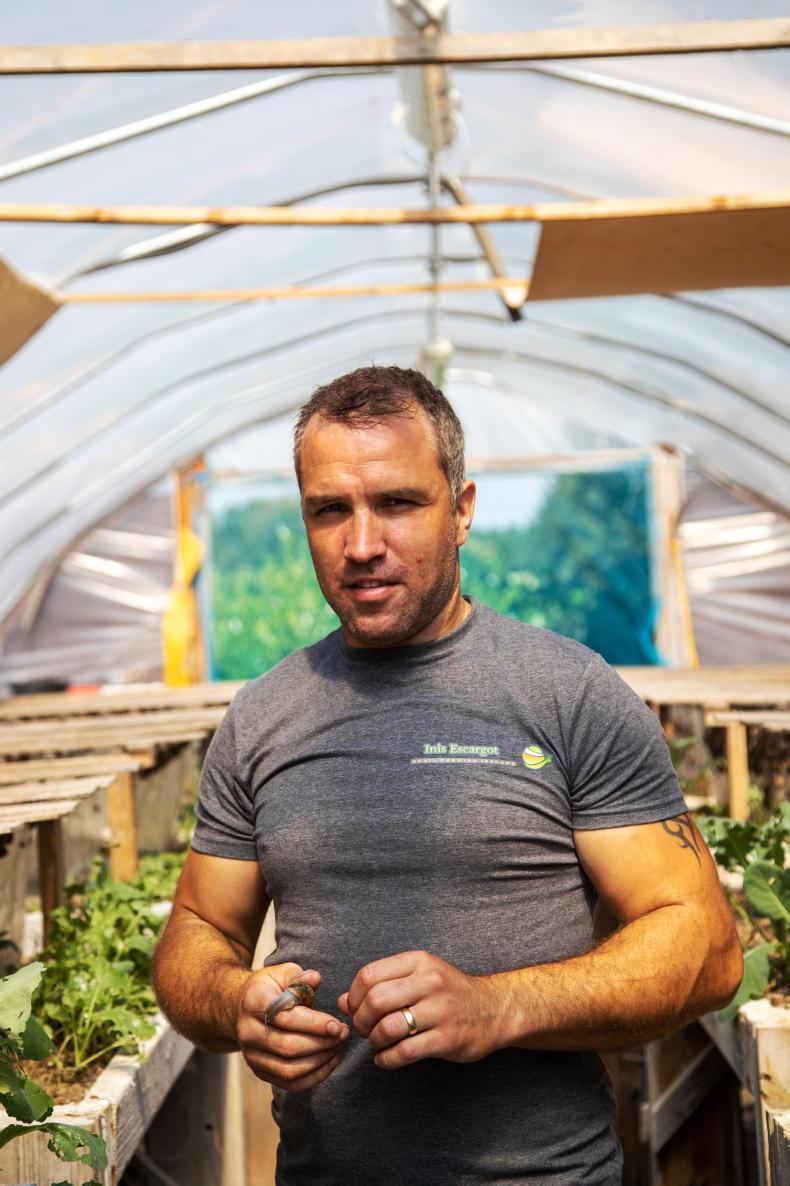
Peter Monaghan owns and operates Inis Escargot in Co Cavan. \ Claire Nash
“The research carried out before we spent any money was key to allow us invest wisely and start up with the correct methods,” he explains. “That being said, there is always room for improvement. We decided right from the start we would dedicate some of our time carrying out our own research. [This entailed] conducting experiments on our own farm each year in order to help our business improve in the long term and reach the yields that are being achieved in Europe.
“The reason for our own experiments is also ?to ensur?e our technique of farming is best suited to the Irish climate and land,” he continues. “It is to continuously improve our productivity outputs and methods by applying lean principles – reducing labour and cost, improving processes and, overall, eliminating waste in these areas – which have led to an increase in profit. This is key to a sustainable snail farming enterprise in Ireland as we don’t have much research to work from, currently.
“The price of escargot could be better, but we knew the price before we invested and refuse to frown upon it as it has enabled us to run our business to date while learning about our native Irish snail, the Helix Aspersia Muller.”
Fully grown snails are currently fetching a price of €4 to €4.50 per kg. Farmers who have successfully gotten to this stage mainly sell their fully grown snails to Eva, who has a contract with the processing unit in Greece.

Peter says years of research and his background in farming have likely attributed to his current success. \ Claire Nash
As he only recently opened his business to the public for sales and services in July of 2022, he is concerned about the current lack of cohesion in Irish heliciculture and the affect this could have on the future of the industry, which he sees as bright and optimistic.
“I don’t believe any [type of] farming is easy, whether it be sucklers, beef, calf rearing or dairy,” he says. “The individual is key to success when deciding to start a farm, large or small. It’s up to the individual farmer to make their farm work. We feel snail farming as a whole cannot be painted by the same paint brush, just like any other form of farming that has success and failures.”
Teagasc
Barry Caslin, energy and rural development specialist at Teagasc, says heliciculture is like any other niche farming operation (for example, Alpaca farming or vermiculture) where research, support and guidance, in an Irish context, are in short supply.
“There has been quite a bit of interest in farmers looking to diversify into snail production,” he says. “There are examples of high-profile snail farms which are leading the way in terms of knowledge and experience, having perfected a method of snail farming that works in Ireland.”
Both Teagasc and Bord Bia say that there are roughly 30 snail farmers currently operating in Ireland. However, when it comes to a perfected method for Irish conditions, there are many who disagree. The lack of research, understanding of best practice - preference for one method of farming over another - has created much confusion for those interested in investing in a snail farm of their own. Barry says, regardless of methodology, if someone is interested in snail farming, they need to have a business plan.

Barry Caslin is the energy and rural development specialist at Teagasc
“You need to identify if there is a market in the first place for the type of snails you opt to fatten,” he says. “Snail farming is not an easy money business. It’s a business that requires a lot of hard work and extensive research in order to make it a successful venture. The most successful snail farmers have suffered high mortality rates and learned from their mistakes only to pursue the business while using this knowledge. The labour requirements are something which seem to be often overlooked by people diversifying into snails.”
Issues remain
Barry says that access to market and processing remains a big issue for small snail farmers.
“There are also issues for snail growers around the classification of snail meat from an export perspective,” he explains. “Demand is obviously much lower here in Ireland than in France. In an ideal world we would see snail farmers supplying local hotels, restaurants and delicatessens with snails in various gastronomic forms. However it appears that western European snail farmers are coming under increasing competition from Eastern European countries, such as Poland.
“There are no facilities here in Ireland to process snails and add value,” he continues. “One of the biggest challenges is to establish distribution to the untapped and huge demand on the continent. The big distributors of snails on the continent are not interested in individual farms. Instead they want to buy in bulk and this is where Irish producers need to focus their business models.
“The establishment of a Centralised Producer Hub will be necessary to help mobilise and distribute the produce from indigenous Irish snail farmers. Snail food distributors are looking at added-value products. This is something which snail growers should be considering.”
Teagasc, Bord Bia and the Department of Agriculture, Food and the Marine (DAFM) all recommend prospective snail farmers speak with their Local Enterprise Office or LEADER board to find potential supports for their enterprise, though individual snail farmers say this has not been a feasible solution, in their cases.
Barry says that, while France has a different climate to Ireland, there are well-established courses on heliciculture there and it could be useful to visit some French snail farms.
“This would only be a starting point,” he adds, “as it will be important to discuss your business options with successfully established snail entrepreneurs from an Irish context.”
Government response
Irish Country Living reached out to both the DAFM and Bord Bia for further comment. The DAFM sent a brief note saying “Snail farmers are advised to engage with their Local Enterprise Organisation or Bord Bia, who are working on a snail market report.”
In their response, a Bord Bia representative echoed this statement. “For any new food start-up, research is key and Bord Bia’s recent report into snail farming is a good start,” they tell us.
“As we know, consumption levels in Ireland are low, so it would be important, as part of business planning, for farmers to talk directly with prospective suppliers, eg foodservice trade or customers in export markets. Finally, your Local Enterprise Office should be the first port of call for any new food business start-up. They have fantastic resources and support in place.”
Costs
It is advised not to rush into a large investment with snail farming. Research independently and take classes before making any purchases. Average investments for new, one-acre snail enterprises can range from €5,000 to €20,000 (for breeding stock, polytunnels, fencing, soil conditioning, etc). Annual costs, then, are for feed, electricity and maintenance (depending on how much labour you can do yourself).
Paperwork
Snail farmers are eligible for a single farm payment, but based on one acre, that grant is minimal. A herd number is required to farm snails. In Ireland, snails are classed as “terrestrial gastropods” and cannot be exported with similar marine exports (like periwinkles). There are no processing facilities in Ireland; snails are exported to Greece for processing.
Yield
This number is disputed, but it is reported that up to 10t of snail meat can be harvested from a one-acre snail farm. Successful snail farmers say you mustn’t expect much in terms of yield for the first three years as you learn what works and what doesn’t on your land.
Stock
Most snail farms in Ireland grow Helix Aspersia Muller, which is native to Ireland. The mortality rates in a 10-month snail cycle (from breeding to harvest) is usually a maximum of 20%, though any number of issues (pathogens, pests, etc) can decimate a snail population.
Method
Most successful Irish snail farmers use a hybrid indoor-outdoor method, where snails are bred and hatched indoors (in a polytunnel) in a controlled environment before being fattened outdoors.
Issues
No peer-reviewed research currently exists on snail farming in Ireland and Teagasc does not offer an advisory service on snail farming at this time. It is recommended by Teagasc, the Department of Agriculture and Bord Bia to contact the Local Enterprise Office or LEADER board on whether a snail farm is a wise investment.
Read more
Could Irish sean bhó (cull cow) give vaca vieja a run for its money?
Should Irish farmers grow hemp?
Starting a new enterprise is always a balanced risk. If you’re successful, you might not just make a profit for yourself but your entire community may benefit too when there’s a new source of employment in the region. If you’re unsuccessful, you stand to lose your investment and the affects could be traumatic.
As journalists and storytellers, we love featuring those who have broken the mould to do something different, whether with their farm, career or their life. Farm diversification stories are especially fascinating – it is scary to break away from what you know to take a chance on a new venture.
These niche farming areas – whether taking on an aquaculture project or starting to grow hemp – make great stories, but it’s important to remember that, for most of these farmers, support and guidance are in short supply. As our agricultural systems diversify and our climate changes, more farmers are finding themselves in a pioneering position – for better or for worse.
This is what has been found as Irish farmers try to make their way through heliciculture or snail farming.
Heliciculture in Ireland
Heliciculture has not been traditionally practised in Ireland. It is only in the past decade that it was introduced. Therefore, there is very little research on snail farming in the context of an Irish climate. We generally turn to those who have been successful with heliciculture to learn about how snail farming works – or could work – in Ireland.
Most successful commercial snail farmers have been farming for five or more years. Most say that the first few years were extremely challenging as they figured out what worked and what didn’t. As there has been no research conducted by Teagasc and only a small amount of market research from Bord Bia, snail farmers have had to find their own route to market, including the processing and export of their snails, as very few are eaten locally and there are no Irish processing facilities.
Why would you farm snails?
“Along with the growing list of health benefits of eating snails, the future of the snail market looks strong. The challenge in Ireland is to create the right farming conditions for sustainable and profitable yields.” – Bord Bia, 2018
While we do not traditionally consume snails here in Ireland, they are enjoyed in many other parts of the world – most notably France – but also in places like Southeast Asia, Northern Africa, Spain and Italy.
Bord Bia’s Global Snail Market Overview (2022) was commissioned by Bord Bia’s Thinking House. They used IndexBox Analysis and Global Trade Atlas (GTA) as the primary sources of data. The report tells us that in 2020, France alone accounted for 31% of total consumption value globally, followed by Spain, Morocco, Portugal, China and Italy.
France may eat the most snails, but the majority of these are imported from other countries. Morocco is by far the largest global producer of snails, followed by Spain, Hungary and Turkey (according to Bord Bia’s report, Ireland comes in at number 23 on that list; having produced 557 tonnes in 2020).
Ireland’s climate is purported to be well-suited to snail farming. Overall demand for snail is high – and not just for food. Skincare, pharmaceutical and other products are made with snail mucous or powdered snail shells.
There is also growing demand for value-added snail products, including pre-prepared snails and snail caviar, which is considered a delicacy and sells for high prices (according to a 2019 article in Modern Farmer, it can catch a price of up to $3,000USD/kg). Nutritionally, snails are low in fat, packed with protein and rich in minerals.

/ Philip Doyle
In the Bord Bia report, a SWOT analysis of snail farming in Ireland was conducted (strengths, weaknesses, opportunities and threats). It lists several strengths, including our “strong Irish image in key European markets for quality and farming” and the “quality of Irish farmed snails”, while the weaknesses include high input costs and the fact that snail farming is very labour intensive.
The current reality
Most agree that there is an opportunity for Ireland to grow its snail farming industry to meet this global demand. However, there are roadblocks which stand in the way of new or would-be snail farmers.
In researching this article, Irish Country Living spoke with snail farmers on both sides of the spectrum; from two of the most successful, to several who have struggled to make any yield or profit. There are few truly successful farms in Ireland, and some say the portrayal of snail farming in Ireland from the media and Government bodies (like Teagasc and Bord Bia) often make it sound more lucrative than they have experienced.
Production
Different methods can be used for snail farming around the world. Some farm snails entirely outdoors, from the first stage of breeding to the final (fourth) stage of harvesting (the full life cycle of a snail, from hatching to harvesting, takes around 10 months).
The method which is generally considered best for Irish conditions is the hybrid indoor-outdoor method, where the breeding stage takes place indoors while maturation and harvesting are done outdoors. However, some argue that the outdoor method is perfectly fine for our climate and requires fewer inputs and less labour (though this method might also result in lower yields).

The preferred farming method of many snail farmers in Ireland is the hybrid indoor-outdoor style, where the snails are bred indoors and reared outdoors. / Philip Doyle
When done correctly, the mixed indoor-outdoor method claims to produce up to 10 tonnes of snail meat per acre. While some believe this number was made up by those providing snail farming courses, Irish Country Living was told the figure comes from European-led research on ideal snail density. The advice is that this should not be more than 250 snails per square metre of land (an acre being 4,000 metres squared; one million snails are able to be produced which can result in the 10 tonne per acre). Other sources say 200 snails per square metre, but stocking rates are dependent on the size and breed of the snail being farmed. Snail mortality rates sit at around 20%.
A few successful commercial snail farmers in Ireland offer ?courses for those interested in starting their own enterprise. The course providers also sell baby or breeding snails, equipment and will often buy back snails from farmers to send to mainland Europe (Greece, to be exact) for processing. Courses cost up to €250 per day.
The main initial investment cost is for the polytunnel, protective fencing (to keep pests out and snails in) and feed, among other things. However, some Irish snail farmers – many who began farming during the pandemic, based on the idea that it would be a lucrative business – say they have invested tens of thousands of euro into their snail farms and will never see a return on the investment.
The struggle
Tina Kavanagh and her husband farm snails on three rented acres in Co Wexford. They do this in addition to their full-time jobs. They started snail farming in 2020, during the first COVID-19 lockdown, after completing initial research online and while both were out of work due to the pandemic.
Having been farming, unsuccessfully, for three years with very little sellable product to show for their efforts, Tina says they had problems from day one. She tells Irish Country Living she is “not wholly convinced” that snail farming in Ireland will ever be a viable option for diversification unless radical changes are made in terms of supports available to farmers.
“At the moment, we have a few people who offer their expertise on courses and we pay for that advice, but when things go wrong for the farmer [at any stage of the breeding, growing, harvesting] then your whole crop is destroyed,” she explains. “That is too big a loss for the farms to sustain year after year. We need to come together as a community and come up with methods to keep us all productive and efficient. There is no point offering courses to new farms every year and money being spent setting up farms if the farms from two years ago are all closing down. It’s just a continuous circle of failure and bad feeling.”
Tina says if snail farming is to succeed in Ireland, the Department of Agriculture, Food and the Marine (DAFM) and Teagasc need to take a proactive approach. This includes the provision of transparent sources of training and information, access to both domestic and international research and to help everyone better understand what is going wrong on so many Irish snail farms.
Other snail farmers make similar complaints. Barry Clarke began farming snails on his 5ac smallholding in Co Kerry. He had heard they were environmentally low-impact and he was looking for ways to diversify his income. He became interested after seeing articles from Teagasc and the media portraying snail farming as a lucrative business option.
“Snail farming got my attention as there were many ‘feature articles’ in farming publications,” he says. “Also, Teagasc featured snail farming [on their website] and reported the same headline figure of 10 tonnes per acre [worth €40,000].”
“If Teagasc had done just a little research they would have discovered - as I have – that 10 tonne per acre is not achievable and that course providers are far from experts. Teagasc should organise official training with French snail farms and not take the word of vested interests?.”
Tina, Barry and numerous others have unsuccessfully attempted to farm snails in Ireland; meaning they have not managed to bring their snails to maturity, put them into the necessary state of hibernation and sell them.
Many failed snail farmers believe those providing courses are not being transparent regarding their successes; in particular the ability to produce 10 tonnes of snail meat per acre and the profitability of snail farming as the main enterprise. An online support group (on Facebook) called Escargot Ireland, offers members tips and support based on their experiences.
Is perseverance key?
At Gaelic Escargot in Co Carlow, Eva Milka says that failure was a huge part of her journey in Irish snail farming – simply because no one had ever done it here before 2013, when she started out.
“We learned very quickly that what works in other countries cannot be fully duplicated in Ireland, as the climate is different here,” she tells Irish Country Living. “We failed more times than I can count, but we never gave up – we just learned from our mistakes and continued our journey. If we look at France, Italy or even Poland, they all have over 30 years’ experience farming snails. In Ireland we have less than 10 years and being on our own was [and still is] the biggest obstacle.

Eva Milka owns and operates Gaelic Escargot in Co Carlow. She first introduced snail farming to Ireland in 2013. / Philip Doyle
“The research and development takes so much time and the biggest difficulty here is that we only have one chance per 10-month cycle,” she adds. “If something goes wrong, there is nothing we can do to fix it and we have to wait for another cycle to begin. If I was a baker and my recipe didn’t work, I could immediately start making a cake again. Sadly, when a mistake is made when farming snails, nothing can be done - and this is why the barrier to become successful is high.”
Eva stresses that farming snails is a long-term project and disagrees with those who say producing 10 tonnes per acre of snail meat is not possible; saying it is public knowledge that she and her partner started farming snails at 10 tonnes per acre before scaling down, by choice, in their fourth year.
“Our rented premises became too small to produce enough baby snails for [both] ourselves and people who were looking to purchase their initial stock,” she says. “Our business model is now based on small volume and higher margin products, and we were able to achieve this by taking the opportunity within the food service market, as opposed to wholesale, which is volume driven.”
Inis Escargot
Another snail farmer, Peter Monaghan, owns and operates Inis Escargot in Co Cavan. He tells Irish Country Living that he and his wife, Elizabeth, have been researching and farming snails for more than seven years and, before they started farming, they carried out two years’ extensive research in Ireland and abroad.

Peter Monaghan owns and operates Inis Escargot in Co Cavan. \ Claire Nash
“The research carried out before we spent any money was key to allow us invest wisely and start up with the correct methods,” he explains. “That being said, there is always room for improvement. We decided right from the start we would dedicate some of our time carrying out our own research. [This entailed] conducting experiments on our own farm each year in order to help our business improve in the long term and reach the yields that are being achieved in Europe.
“The reason for our own experiments is also ?to ensur?e our technique of farming is best suited to the Irish climate and land,” he continues. “It is to continuously improve our productivity outputs and methods by applying lean principles – reducing labour and cost, improving processes and, overall, eliminating waste in these areas – which have led to an increase in profit. This is key to a sustainable snail farming enterprise in Ireland as we don’t have much research to work from, currently.
“The price of escargot could be better, but we knew the price before we invested and refuse to frown upon it as it has enabled us to run our business to date while learning about our native Irish snail, the Helix Aspersia Muller.”
Fully grown snails are currently fetching a price of €4 to €4.50 per kg. Farmers who have successfully gotten to this stage mainly sell their fully grown snails to Eva, who has a contract with the processing unit in Greece.

Peter says years of research and his background in farming have likely attributed to his current success. \ Claire Nash
As he only recently opened his business to the public for sales and services in July of 2022, he is concerned about the current lack of cohesion in Irish heliciculture and the affect this could have on the future of the industry, which he sees as bright and optimistic.
“I don’t believe any [type of] farming is easy, whether it be sucklers, beef, calf rearing or dairy,” he says. “The individual is key to success when deciding to start a farm, large or small. It’s up to the individual farmer to make their farm work. We feel snail farming as a whole cannot be painted by the same paint brush, just like any other form of farming that has success and failures.”
Teagasc
Barry Caslin, energy and rural development specialist at Teagasc, says heliciculture is like any other niche farming operation (for example, Alpaca farming or vermiculture) where research, support and guidance, in an Irish context, are in short supply.
“There has been quite a bit of interest in farmers looking to diversify into snail production,” he says. “There are examples of high-profile snail farms which are leading the way in terms of knowledge and experience, having perfected a method of snail farming that works in Ireland.”
Both Teagasc and Bord Bia say that there are roughly 30 snail farmers currently operating in Ireland. However, when it comes to a perfected method for Irish conditions, there are many who disagree. The lack of research, understanding of best practice - preference for one method of farming over another - has created much confusion for those interested in investing in a snail farm of their own. Barry says, regardless of methodology, if someone is interested in snail farming, they need to have a business plan.

Barry Caslin is the energy and rural development specialist at Teagasc
“You need to identify if there is a market in the first place for the type of snails you opt to fatten,” he says. “Snail farming is not an easy money business. It’s a business that requires a lot of hard work and extensive research in order to make it a successful venture. The most successful snail farmers have suffered high mortality rates and learned from their mistakes only to pursue the business while using this knowledge. The labour requirements are something which seem to be often overlooked by people diversifying into snails.”
Issues remain
Barry says that access to market and processing remains a big issue for small snail farmers.
“There are also issues for snail growers around the classification of snail meat from an export perspective,” he explains. “Demand is obviously much lower here in Ireland than in France. In an ideal world we would see snail farmers supplying local hotels, restaurants and delicatessens with snails in various gastronomic forms. However it appears that western European snail farmers are coming under increasing competition from Eastern European countries, such as Poland.
“There are no facilities here in Ireland to process snails and add value,” he continues. “One of the biggest challenges is to establish distribution to the untapped and huge demand on the continent. The big distributors of snails on the continent are not interested in individual farms. Instead they want to buy in bulk and this is where Irish producers need to focus their business models.
“The establishment of a Centralised Producer Hub will be necessary to help mobilise and distribute the produce from indigenous Irish snail farmers. Snail food distributors are looking at added-value products. This is something which snail growers should be considering.”
Teagasc, Bord Bia and the Department of Agriculture, Food and the Marine (DAFM) all recommend prospective snail farmers speak with their Local Enterprise Office or LEADER board to find potential supports for their enterprise, though individual snail farmers say this has not been a feasible solution, in their cases.
Barry says that, while France has a different climate to Ireland, there are well-established courses on heliciculture there and it could be useful to visit some French snail farms.
“This would only be a starting point,” he adds, “as it will be important to discuss your business options with successfully established snail entrepreneurs from an Irish context.”
Government response
Irish Country Living reached out to both the DAFM and Bord Bia for further comment. The DAFM sent a brief note saying “Snail farmers are advised to engage with their Local Enterprise Organisation or Bord Bia, who are working on a snail market report.”
In their response, a Bord Bia representative echoed this statement. “For any new food start-up, research is key and Bord Bia’s recent report into snail farming is a good start,” they tell us.
“As we know, consumption levels in Ireland are low, so it would be important, as part of business planning, for farmers to talk directly with prospective suppliers, eg foodservice trade or customers in export markets. Finally, your Local Enterprise Office should be the first port of call for any new food business start-up. They have fantastic resources and support in place.”
Costs
It is advised not to rush into a large investment with snail farming. Research independently and take classes before making any purchases. Average investments for new, one-acre snail enterprises can range from €5,000 to €20,000 (for breeding stock, polytunnels, fencing, soil conditioning, etc). Annual costs, then, are for feed, electricity and maintenance (depending on how much labour you can do yourself).
Paperwork
Snail farmers are eligible for a single farm payment, but based on one acre, that grant is minimal. A herd number is required to farm snails. In Ireland, snails are classed as “terrestrial gastropods” and cannot be exported with similar marine exports (like periwinkles). There are no processing facilities in Ireland; snails are exported to Greece for processing.
Yield
This number is disputed, but it is reported that up to 10t of snail meat can be harvested from a one-acre snail farm. Successful snail farmers say you mustn’t expect much in terms of yield for the first three years as you learn what works and what doesn’t on your land.
Stock
Most snail farms in Ireland grow Helix Aspersia Muller, which is native to Ireland. The mortality rates in a 10-month snail cycle (from breeding to harvest) is usually a maximum of 20%, though any number of issues (pathogens, pests, etc) can decimate a snail population.
Method
Most successful Irish snail farmers use a hybrid indoor-outdoor method, where snails are bred and hatched indoors (in a polytunnel) in a controlled environment before being fattened outdoors.
Issues
No peer-reviewed research currently exists on snail farming in Ireland and Teagasc does not offer an advisory service on snail farming at this time. It is recommended by Teagasc, the Department of Agriculture and Bord Bia to contact the Local Enterprise Office or LEADER board on whether a snail farm is a wise investment.
Read more
Could Irish sean bhó (cull cow) give vaca vieja a run for its money?
Should Irish farmers grow hemp?










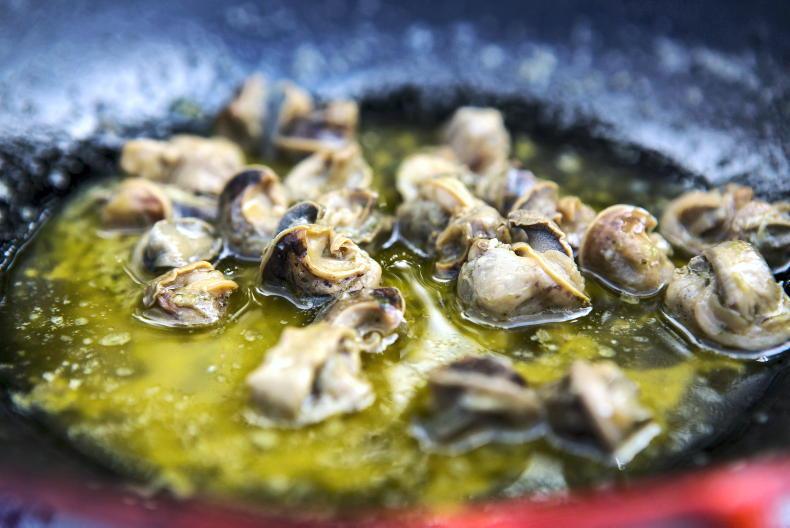
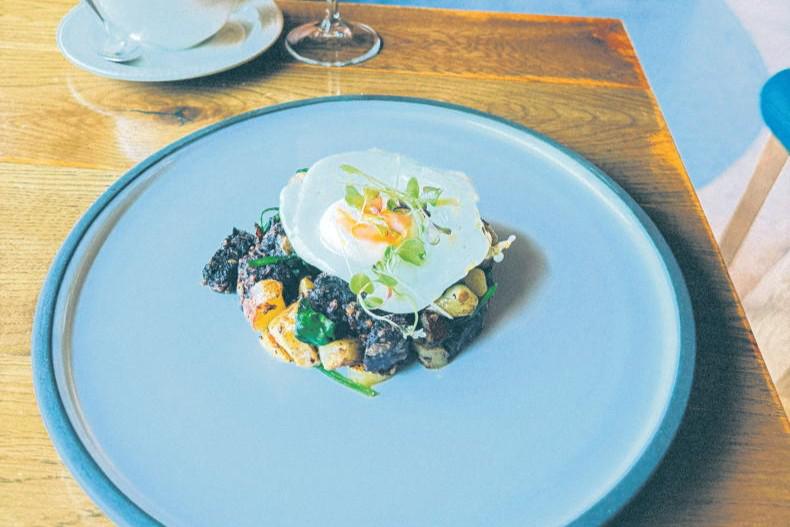
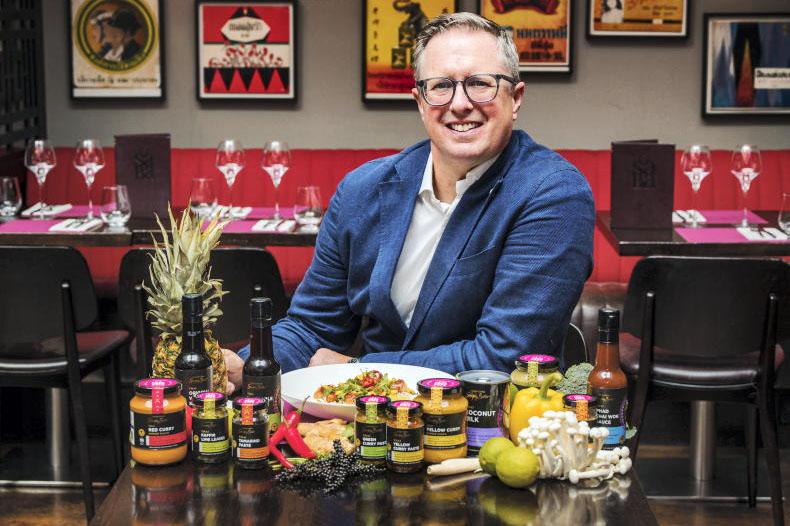
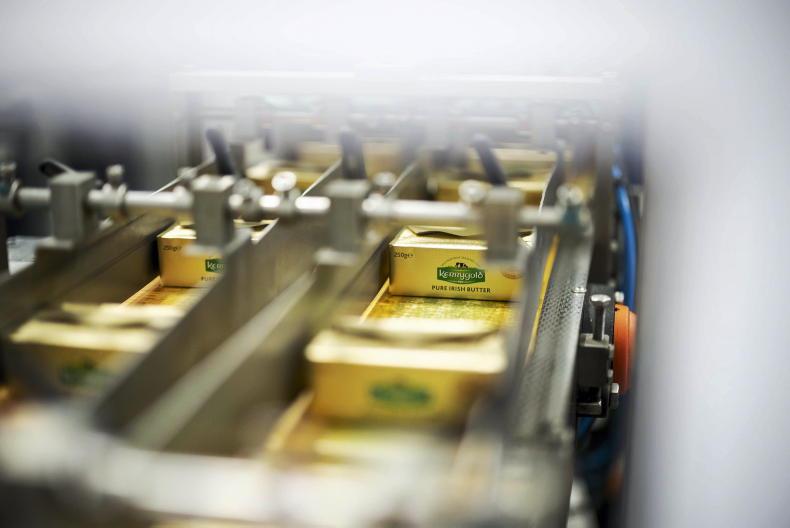
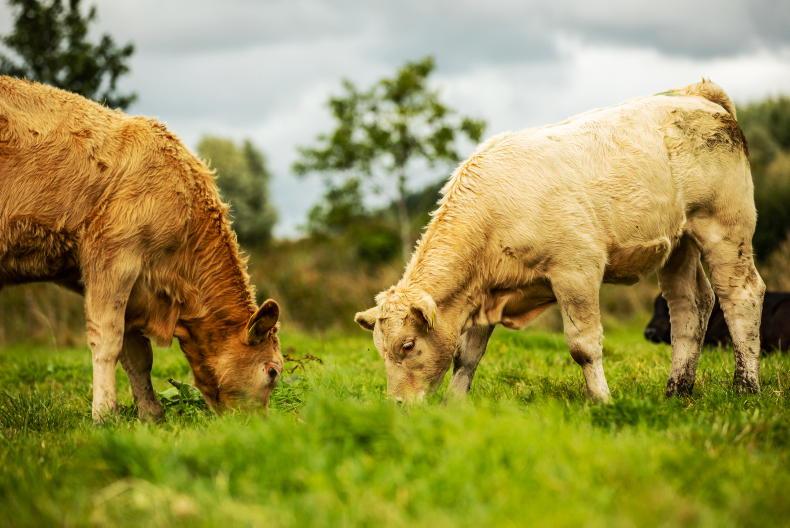
SHARING OPTIONS